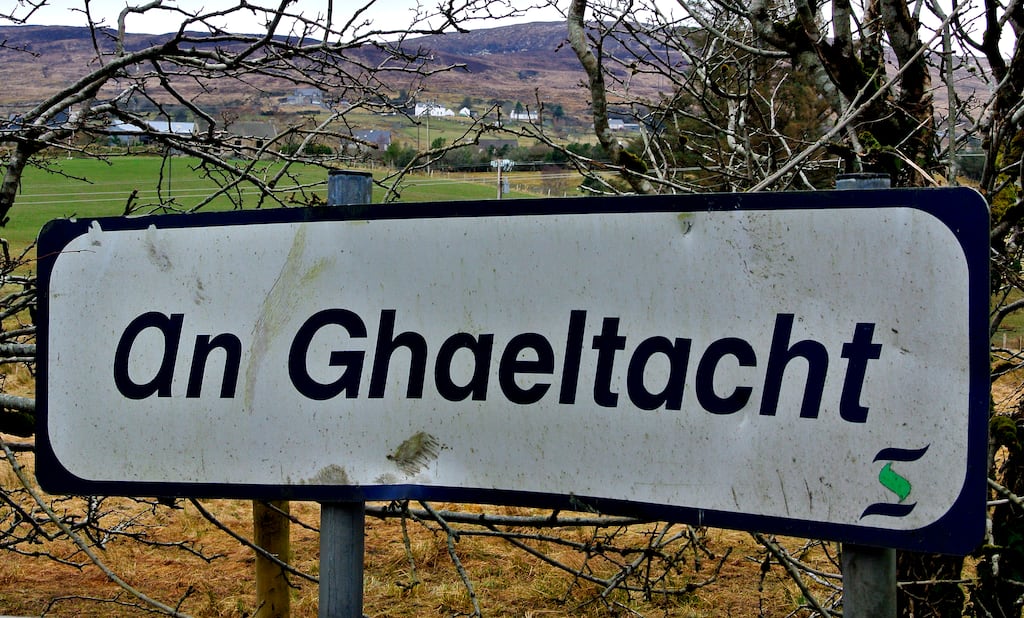The latest official figures published by the Central Statistics Office reveal that the percentage of daily Irish speakers has dropped nationally, falling by more than 2 per cent since 2016.
The overall number of daily speakers of Irish outside the education system nationally numbered 71,968 in 2022, which is a fall of 1,835 on the 2016 figure of 73,803.
This represents the second consecutive drop in the numbers of daily Irish speakers recorded in the census.
The total number of people who could speak Irish in April 2016 was 1,761,420, representing 39.8 per cent of the population, a decrease of 13,017 on the 2011 figure of 1,774,437.
READ MORE
The latest census data does, however, show an increase of over 6 per cent in the number of people indicating an ability to speak Irish – reaching 1,873,997 in 2022 from the 1,761,420 individuals who indicated an ability to speak Irish in 2016.
Those indicating an ability to speak Irish represent 40.4 per cent of Ireland’s population aged 3 years and older, and is a slight increase from the 39.8 per cent of the overall population who indicated an ability to speak Irish in 2016.
Of those who reported they speak Irish, 623,961 people reported speaking it on a daily basis, both within and outside the education system.
In a first for the CSO, data was gathered in 2022 on the level of ability in Irish.
Activists campaigning for greater use in the public sphere of the Irish language will be bolstered by results that show 42 per cent of people report a good level of ability in Irish and a higher level of proficiency among a younger cohort.
Of the 1,873,997 Irish speakers, 10 per cent said they spoke the language “very well”, with a further “32 per cent” reporting that they can speak it “well”.
The data shows 63 per cent of people aged between 15 and 19 who spoke Irish reported that they spoke it either “very well” or “well”.
A fifth of Irish speakers in counties Galway and Donegal reported speaking the language “very well,” the highest percentage at county level recorded in the State.
Kerry and Monaghan were also among the counties with the highest percentage (12 per cent) of people who spoke the language “very well”.
Some 55 per cent of those who indicated that they spoke Irish reported they “did not speak the language well”.
The highest percentage of respondents who reported they do not speak Irish well was 69.8 per cent in the 50-54 age group.
The data recorded a further decline in the number of people who speak Irish on a daily basis in Gaeltacht areas, with 15,360 speaking Irish daily outside of the education system, a fall from the 16,199 reported in 2016.
However, a slight increase was recorded in the overall numbers of people who speak Irish in Gaeltacht areas, with 65,156 people reporting as Irish speakers in 2022. This compares to 63,664 who reported as Irish speakers in 2016.
Tomás Ó Síocháin, chief executive of Údarás na Gaeltachta, said: “It is really important that the figures published today are available to us and that we now have more up to date information about the use of Irish in the Gaeltacht. Although there is a small drop overall for the number of daily Irish speakers – 1.6 per cent - it is significant that this is a decrease from the drop of 11 per cent in 2016.”
‘’It is clear that in areas where there has been a fall there is an urgent need for further screening and combing of census figures, work that will begin immediately including the areas where the number of daily speakers has increased,’ he said.
Paula Melvin, Uachtarán, Conradh na Gaeilge said the Census results contained some “very positive results” along with some “concerning results”.
“Whilst there is a trend showing the Irish language community, those people who have Irish, is growing across the board, there is also a very clear trend showing the Irish speaking community, those using Irish on a daily or weekly basis, both inside and outside of the Gaeltacht, is decreasing. That is a great cause for concern for Conradh na Gaeilge,” she said.
She added that the increase in numbers of younger people speaking Irish is “very much one of the most positive and encouraging aspects of the results”.
The Mayo and Donegal Gaeltacht areas each reported a fall in speakers in the 2022 Census.
The Mayo Gaeltacht saw a fall in the numbers of Irish speakers from 6,121 in 2016 to 5,956 in 2022. In Donegal, 15,549 individuals reported as Irish speakers in 2022, compared to 15,879 in 2016.
Other Gaeltacht areas recorded overall increases in the number of Irish speakers. In Co Galway Gaeltacht areas, 24,234 individuals reported speaking Irish in 2022, an increase on 23,550 in 2016. In Galway City Gaeltacht areas, 7,751 individuals reported speaking Irish in 2022, an increase on 7,020 in 2016.
The Co Kerry Gaeltacht recorded a slight increase in Irish speakers, with 6,068 reporting in 2022, up from 5,874 in 2016.
The Meath and Waterford Gaeltacht areas also recorded increases in the number of speakers, with Meath reporting 1,179 speakers against 1,062 in 2016 and Waterford reporting 1,473 against 1,286 in 2016.
The number of individuals in Dublin who reported being able to speak Irish increased from 431,413 in 2016 to 467,679 in 2022.
Within this group 16,440 people said they spoke Irish daily while 29,624 individuals spoke Irish weekly.
The number of people who stated in 2022 that they could speak Irish in Galway was 121,930 compared with 115,389 in 2016. Within this figure, 13,507 said they spoke Irish daily while 9,182 spoke Irish weekly.
Irish speakers in Cork numbered 238,226 in 2022 compared with 224,139 in 2016. Within this figure, 6,906 said they spoke Irish daily while 14,424 spoke Irish weekly
More data relating to the Irish language will be released by the CSO in December.













